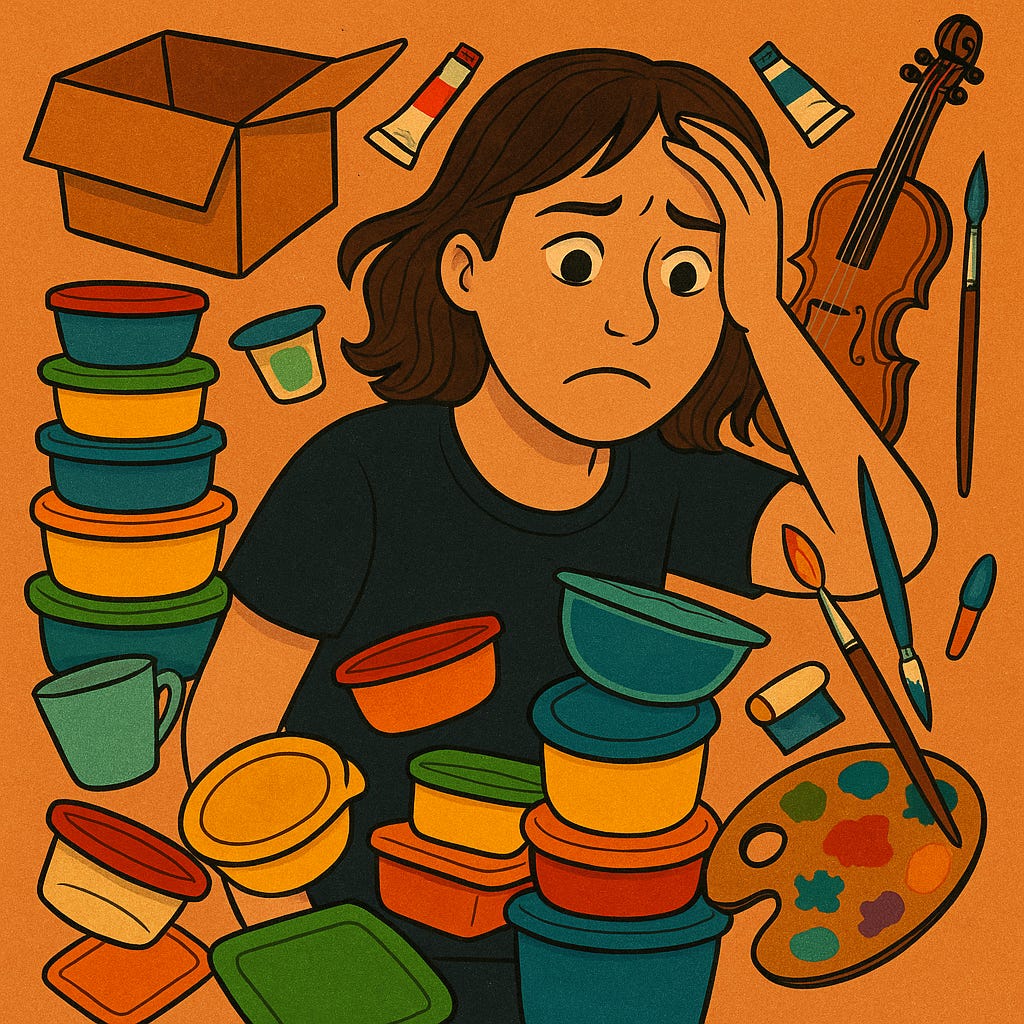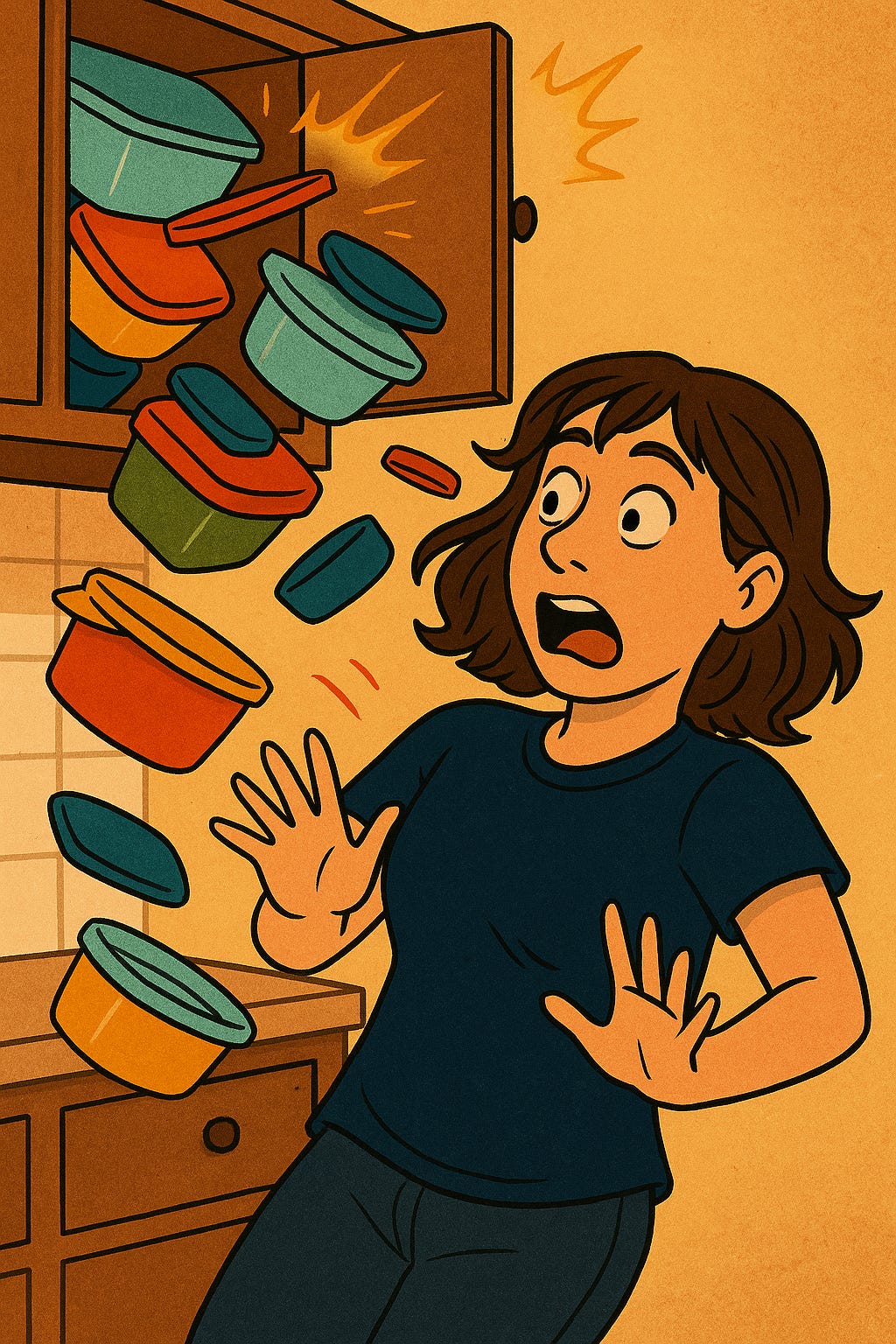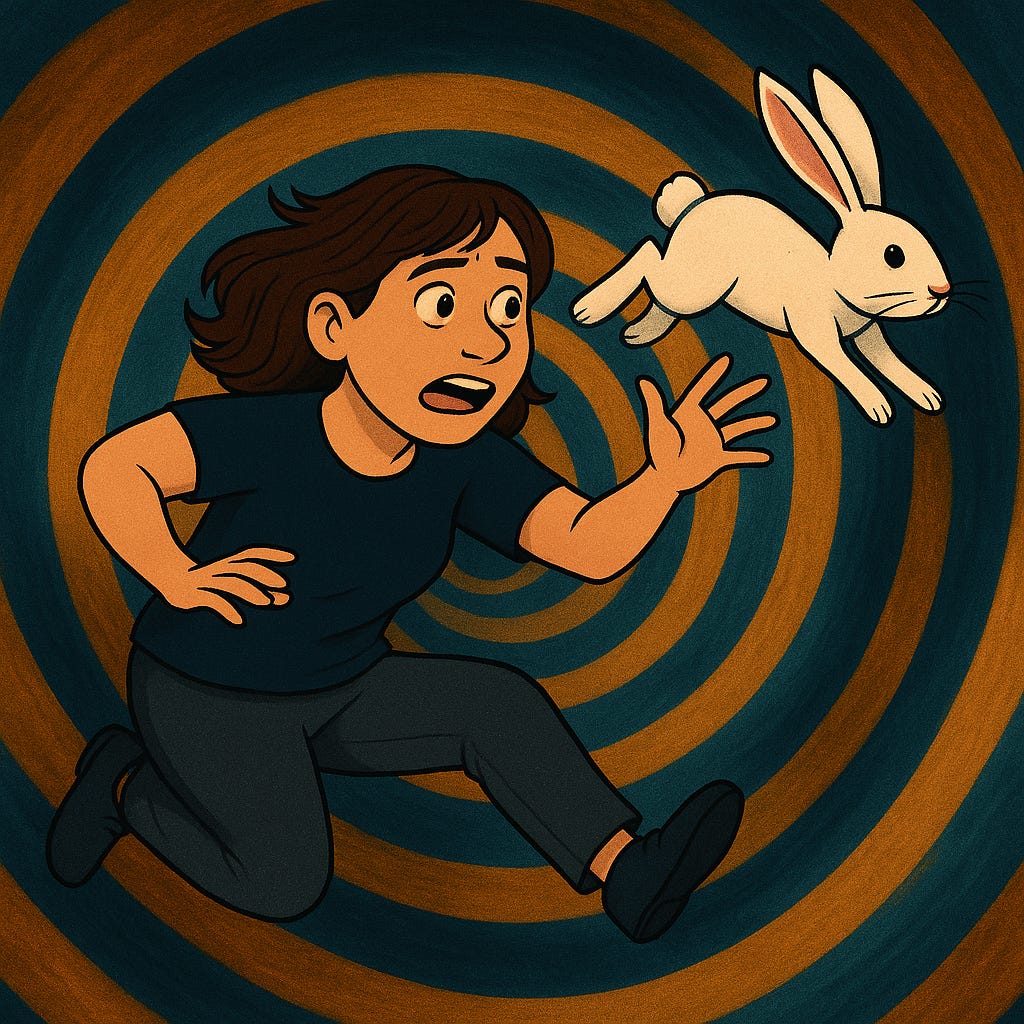When the Mess Won’t Let You Work
How ADHD Turns Clutter into a Full-Blown Blockade
When the Mess Won’t Let You Work
How ADHD Turns Clutter into a Full-Blown Blockade

When the Mess Takes Over
There are days when I sit down to create—and instead of diving into my art or writing, my eyes snag on the piles. The clutter on my desk. The laundry in the corner. The dishes left behind. It feels like the mess itself has grown teeth and is standing in my way.
It’s not just about being “distracted.” For me, the mess becomes a physical and mental barrier. My ADHD brain interprets it as unfinished business screaming at me. It doesn’t matter if I want to work, or even if I’ve carved out the time. The noise of the mess is louder than my own ideas.
The Cycle of Clutter and Defeat
Here’s the kicker—sometimes I clean, but that can turn into a black hole of its own. Instead of working, I spiral into “just one more thing” until the entire day evaporates. The irony? That’s actually another form of hyperfocus. My brain locks onto the clutter like it’s the only problem worth solving. And once I’m in it, hours can vanish while my real work waits untouched. ADHD really does find a way to turn everything into hyperfocus.
The cycle looks something like this:
Want to work.
Notice the mess.
Can’t focus until it’s gone.
Start cleaning.
Run out of energy or time for the actual work.
Feel defeated.
Sound familiar?
Part of why clutter builds is hyperfocus itself. When I’m deep in a project, I don’t notice the mess I’m making. It builds and builds until I hit a breaking point where I can no longer overlook it. That’s when the pressure to “fix it all at once” becomes overwhelming.
For me, it’s not just an annoyance—it’s physical. On anxious days, the clutter feels louder, almost like noise pressing in on me. My eyes catch every undone thing, and it feels impossible to calm down or start creating until I’ve tamed it. Sometimes organizing is less about productivity and more about soothing my nervous system. It’s a strange contradiction: the mess overwhelms me, but organizing it can also be the very thing that regulates me.
The Thrill of Order
I’ve learned that this pull toward order isn’t laziness. It’s survival. Back in my early 20s, working in banking with strict deadlines, I realized fast that if I didn’t create systems, I’d drown. So I built systems so clean that when I went on maternity leave, my team barely had to lift a finger. That’s one of ADHD’s ironies: we can be messy, but we’re also masters of inventing shortcuts and structures—because we have to be.
There’s also a real satisfaction in getting organized. Sometimes hyperfocus locks me into it because it feels that good to finally make sense of the chaos. Honestly, it’s more than satisfaction—it’s a thrill. I’m known for organizing, and not just because I have to. I love bringing things into order, making them run better, decorating, noticing every little detail out of place and setting it right. That same instinct is probably why I thrive as an artist, too: abstract work demands a sensitivity to balance, tension, and detail. The very thing that overwhelms me is also part of what fuels my creativity.

When Organizing Becomes Pandora’s Box
How much the mess bothers me depends a lot on how I’m feeling that day. If life stress or anxiety is high—or if I’m not feeling well physically—the noise of disorganization becomes unbearable. But when my space is aligned with me, it can light me up. Right now, my office-slash-spare room feels perfect: art pinned on the walls, color everywhere. Just sitting in that environment makes me happy and ready to create.
The trap is when one small task triggers another. I’ll start putting away dishes, and then open the hallway cupboard where the storage containers live—only to find towers of lids and bowls balanced precariously. In that moment, it feels almost impossible to just shove the container inside and move on. The thought of finally fixing it—of having it organized and usable—is so overpowering it can hijack my whole day. I have to literally tell myself: No, not now. Because the relief of finishing it is intoxicating, but it can derail everything else.
Organizing can feel like opening Pandora’s box. One thing leads to another, and suddenly my whole day is gone. And when it derails everything else, I’m devastated—because it all comes back to time. Time is the thread running through it all: the need for order, the need for a calm environment, the need to quiet the noise in my head when there are too many ideas colliding at once.
Following the Rabbit
Tamara Rosier, in Your Brain’s Not Broken (Chapter 4, “Following the Rabbit”), uses Alice’s Adventures in Wonderland by Lewis Carroll as a metaphor for ADHD thinking. Like Alice falling down the rabbit hole, one thought leads to another, twisting and turning until we’re far from where we started. That’s exactly how the mess works for me. I’ll start with one small task—like putting away the dishes—and before long, I’ve followed the rabbit into reorganizing a cupboard or an entire room. It’s creative, it’s nonlinear, and sometimes it’s even thrilling. But it can also steal entire days.
Overstimulated Systems
At the core, it’s about an overstimulated nervous system. ADHD isn’t just about distraction—it’s about living in a body and mind that are constantly “too much.” When the world piles on with clutter, undone tasks, or noise, my system tips into overload. That’s why I admire calm people so deeply, the ones who speak slowly and move through the world without all this static. But I’ve also come to realize that our differences matter. There’s a place for the rapid, nonlinear, sensitive, creative minds too. We’re not broken—we’re just wired differently.
The Artist’s Eye
As Søren Kennedy points out in ADHD is Awesome, ADHD brains often notice what others miss. That constant scanning, that sensitivity to detail, can feel overwhelming—but it’s also why I see the world the way I do as an artist. The same eyes that obsess over a messy cupboard are the ones that find rhythm and resonance in abstract forms. People have even described my art as both chaotic and calming—a paradox that makes sense when I think about it. My eye craves balance, even in chaos. That sensitivity is what fuels my abstract work.
Tools to Try
Here are a few simple, ADHD-friendly strategies I use (or am learning to use) when the mess feels like too much:
The 10-Minute Tidy → Set a timer and do just enough to take the edge off. Stop when the timer ends, even if it’s not perfect.
Whiteboard or Dry-Erase Checklist → I use a clear dry-erase board on my fridge with a reusable daily checklist. Instead of rewriting the same things every day (which gets boring fast), I just wipe them off and start again. Over time, these practices become second nature, but the board keeps me grounded in the meantime.
Declare It Good Enough → Perfectionism is real. Declaring something “good enough” is a muscle I’ve had to build. It’s uncomfortable, but essential. If the space is functional, it doesn’t have to be flawless.
Shift Spaces → If one room feels overwhelming, move to another calmer spot to start your work. Cooler air, softer light, or a different view can calm your nervous system and reset your focus.
These tools don’t erase the mess, but they help me quiet the noise enough to get back to what matters: creating.
Easing the Pressure
What helps me now is remembering that my brain isn’t broken. This isn’t laziness—it’s my nervous system demanding a clear runway. Sometimes I set a timer for 10 minutes, do just enough to quiet the noise, and then declare the space good enough. Other times I shift myself to a different spot in my house that feels calmer.
The truth is, ADHD brains crave clarity to create. For some of us, clutter is more than background static—it’s a roadblock. Naming this cycle takes away its power. The more I can call it what it is—the mess, the rabbit holes, the hyperfocus traps—the less weight it carries. It’s not that I can’t work. It’s that I’m wired differently. And there’s no shame in finding ways through.
Because when the mess finally quiets down, my creativity comes rushing back like water finding its flow.
Still Me | Still You
Still me. Still you. Still figuring it out.
Still Me is a reflective space for ADHD, creativity, and the messy, luminous process of becoming.
Recommended Reading
Your Brain’s Not Broken by Tamara Rosier — A compassionate, metaphor-rich guide (see Chapter 4, “Following the Rabbit”) that frames ADHD thought patterns with clarity and humor.
ADHD 2.0 by Edward M. Hallowell & John J. Ratey — A deeper dive into the ADHD brain, with science-based strategies for harnessing attention and managing environment.
ADHD is Awesome by Søren Kennedy — A strength-based perspective that reframes ADHD as a source of creativity and sensitivity.
Driven to Distraction by Edward M. Hallowell & John J. Ratey & Delivered from Distraction — Classics that first gave ADHD its cultural voice.
The Gifts of Imperfection by Brené Brown — Not ADHD-specific, but a powerful lens on resilience and self-compassion.
For quick reads: explore ADDitude Magazine or CHADD for practical ADHD strategies and lived experience.
Coming Next
Next time, I’ll share what happens when the mask starts to crack — when I say yes out of duty and belonging, but the weight of white-knuckling and burnout begins to show.



